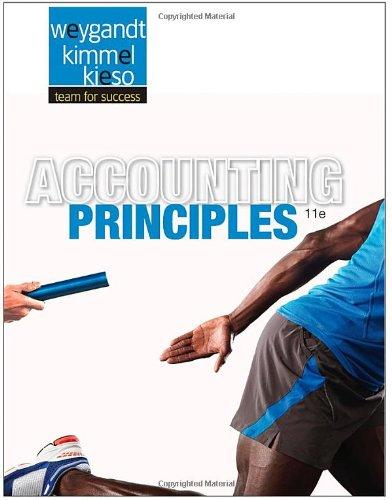You would like to start a business manufacturing a unique model of bicycle helmet. In preparation for
Question:
You would like to start a business manufacturing a unique model of bicycle helmet. In preparation for an interview with the bank to discuss your financing needs, you develop answers to the following questions. A number of assumptions are required; clearly note all assumptions that you make.Instructions(a) Identify the types of costs that would likely be involved in making this product.(b) Set up five columns as indicated.

Classify the costs you identified in (a) Into the manufacturing cost classifications of product costs (direct materials, direct labor, and manufacturing overhead) and period costs.(c) Assign hypothetical monthly dollar figures to the costs you identified in (a) and (b).(d) Assume you have no raw materials or work in process beginning or ending inventories.Prepare a projected cost of goods manufactured schedule for the first month of operations.(e) Project the number of helmets you expect to produce the first month of operations. Compute the cost to produce one bicycle helmet. Review the result to ensure it is reasonable; if not, return to part (c) and adjust the monthly dollar figures you assigned accordingly.(f) What type of cost accounting system will you likely use??job order or process costing?(g) Explain how you would assign costs in either the job order or process costing system you plan to use.(h) Classify your costs as either variable or fixed costs. For simplicity, assign all costs to either variable or fixed, assuming there are no mixed costs, using the format shown.Item Variable Costs Fixed Costs Total Costs(i) Compute the unit variable cost, using the production number you determined in (e).(j) Project the number of helmets you anticipate selling the first month of operations. Set a unit selling price, and compute both the contribution margin per unit and the contribution margin ratio.(k) Determine your break-even point in dollars and in units.(l) Prepare projected operating budgets (sales, production, direct materials, direct labor, manufacturing overhead, selling and administrative expense, and income statement). You will need to make assumptions for each of the following:Direct materials budget: Quantity of direct materials required to produce one helmet; cost per unit of quantity; desired ending direct materials (assume none).Direct labor budget: Direct labor time required per helmet; direct labor cost per hour.Budgeted income statement: Income tax expense is 45% of income from operations.(m) Prepare a cash budget for the month. Assume the percentage of sales that will be collected from customers is 75%, and the percentage of direct materials that will be paid in the current month is 75%.(n) Determine a relevant range of activity, using the number of helmets produced as your activity index. Recast your manufacturing overhead budget into a flexible monthly budget for two additional activity levels.(o) Identify one potential cause of materials, direct labor, and manufacturing overhead variances for your product.(p) Assume that you wish to purchase production equipment that costs $720,000. Determine the cash payback period, utilizing the monthly cash flow that you computed in part (m) multiplied by 12 months (for simplicity).(q) Identify any nonfinancial factors that should be considered before commencing your business venture.
Contribution MarginContribution margin is an important element of cost volume profit analysis that managers carry out to assess the maximum number of units that are required to be at the breakeven point. Contribution margin is the profit before fixed cost and taxes... Cash Budget
A cash budget is an estimation of the cash flows for a business over a specific period of time. These cash inflows and outflows include revenues collected, expenses paid, and loans receipts and payment. Its primary purpose is to provide the...
Step by Step Answer:

Accounting Principles
ISBN: 9781118566671
11th Edition
Authors: Jerry Weygandt, Paul Kimmel, Donald Kieso





